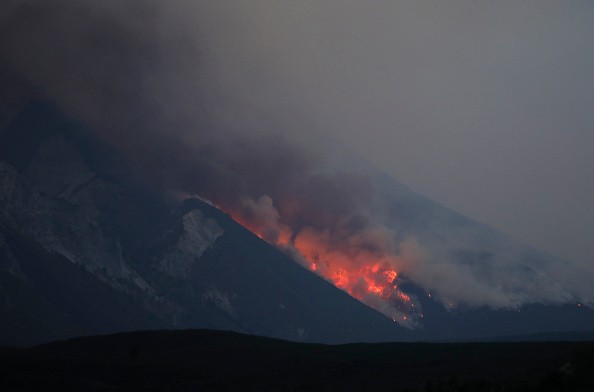According to a recent study, smoke from wildfires depletes the ozone layer.
Researchers warn that if catastrophic fires become even more common as a result of climate change, more harmful UV light from the sun would reach the earth.
Smoke from the Australian wildfires of 2019 and 2020 damaged atmospheric ozone in the Southern Hemisphere for months, according to atmospheric chemists at the University of Waterloo.
The ozone shield is a layer of the Earth's atmosphere's stratosphere that absorbs UV radiation from the sun.
Smoke of wildfires in Australia can cause ozone depletion

Towers of smoke that ascended up into the stratosphere amid Australia's "black summer" fires in 2019 and 2020 damaged portions of the Earth's protective ozone layer, according to a study published in the journal Science on March 18.
Chemist Peter Bernath of Old Dominion University in Norfolk, Virginia, and his colleagues examined data obtained in the lower atmosphere by the Atmospheric Chemistry Experiment satellite sensor in 2020.
It determines how different particles in the atmosphere absorb energy at distinct frequencies, as per Science News.
These absorption patterns function similarly to fingerprints in determining which chemicals are incorporated in the nanoparticles.
According to Bernath, the Australian fires shot acidic combustion byproducts into the stratosphere, altering the chlorine, hydrogen, and nitrogen chemistry that regulates ozone.
This is the first large-scale measurement of smoke, demonstrating that it is transforming ozone-regulating chemicals into more reactive molecules that deplete ozone.
This harm, like the holes above polar areas, is only temporary, and ozone levels restored to pre-wildfire levels after the smoke cleared the stratosphere.
However, if flames become more common, the devastation will become more frequent, as per ScienceDaily.
The smoke damage, like the holes above polar areas, is a transient impact, and ozone levels restored to pre-wildfire levels once the smoke cleared the stratosphere.
However, if wildfires become more common, the devastation will become more frequent.
A research published in 2020 discovered that the ozone layer was recovering and has the ability to fully regenerate.
A rare accomplishment in reversing environmental harm and demonstrating that coordinated global effort can make a difference.
Effects of greenhouse gas on the ozone depletion
The ozone layer is being depleted mostly as a result of increased emissions of chlorine- and bromine-containing chemicals such as CFCs, halons, carbon tetrachloride, methyl chloroform, and methyl bromide.
Through atmospheric interaction, greenhouse gas emissions can contribute to ozone layer depletion, as per Union of Concerned Scientists.
Observations demonstrate that when greenhouse gases grow and cause warmth in the lower atmosphere (troposphere), the higher atmosphere cools (stratosphere).
Specifically, heat from the Earth's surface that would typically pass through the troposphere and stratospheric and finally escape to space is now trapped (or confined to the troposphere).
In all other words, high - temperature gases lead to the atmospheric cooling that leads to ozone layer depletion.
Greenhouse gases trap heat and warm the atmosphere at low altitudes, but they have the reverse effect at higher elevations because they block heat from ascending.
Ozone loss has a cooling effect in a colder stratosphere, resulting in more ozone depletion. When UV light combines with ozone, it emits heat into the stratosphere.
With less ozone, less heat is emitted, which amplifies cooling in the lower stratosphere and promotes the creation of ozone-depleting polar stratospheric clouds, particularly near the South Pole.
© 2025 NatureWorldNews.com All rights reserved. Do not reproduce without permission.




